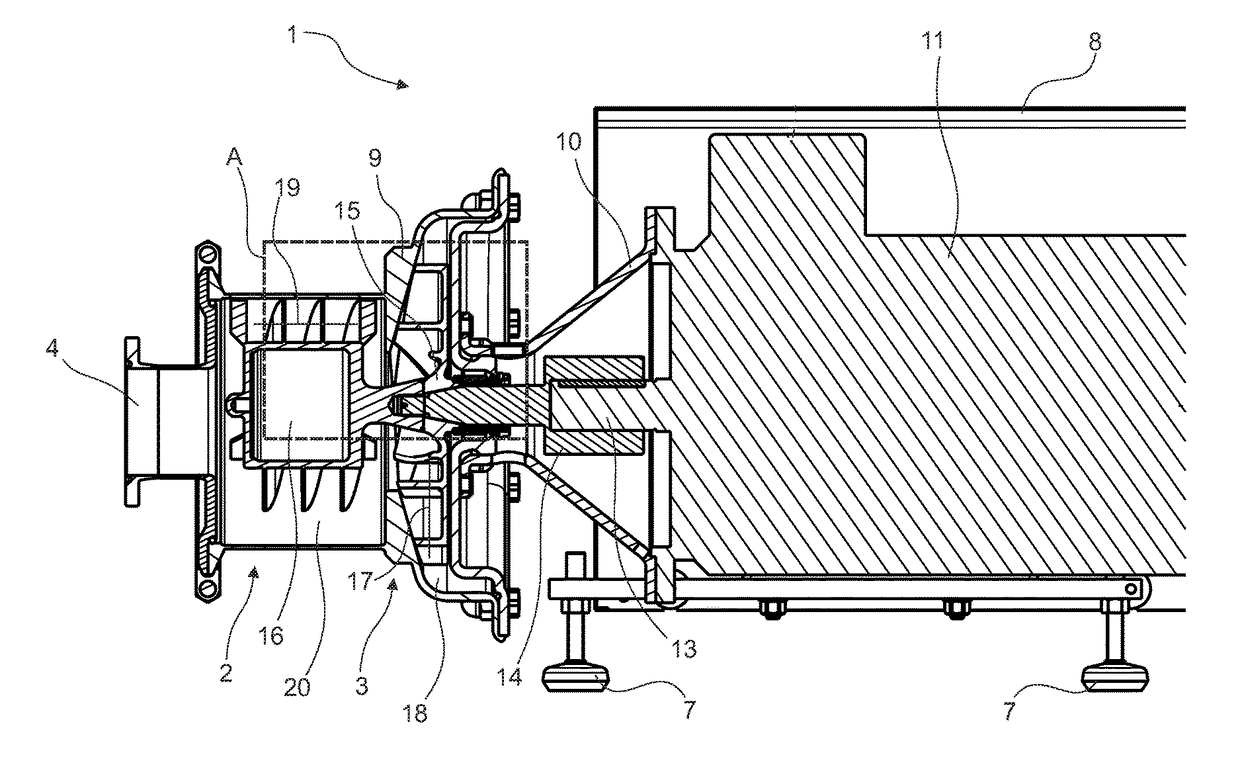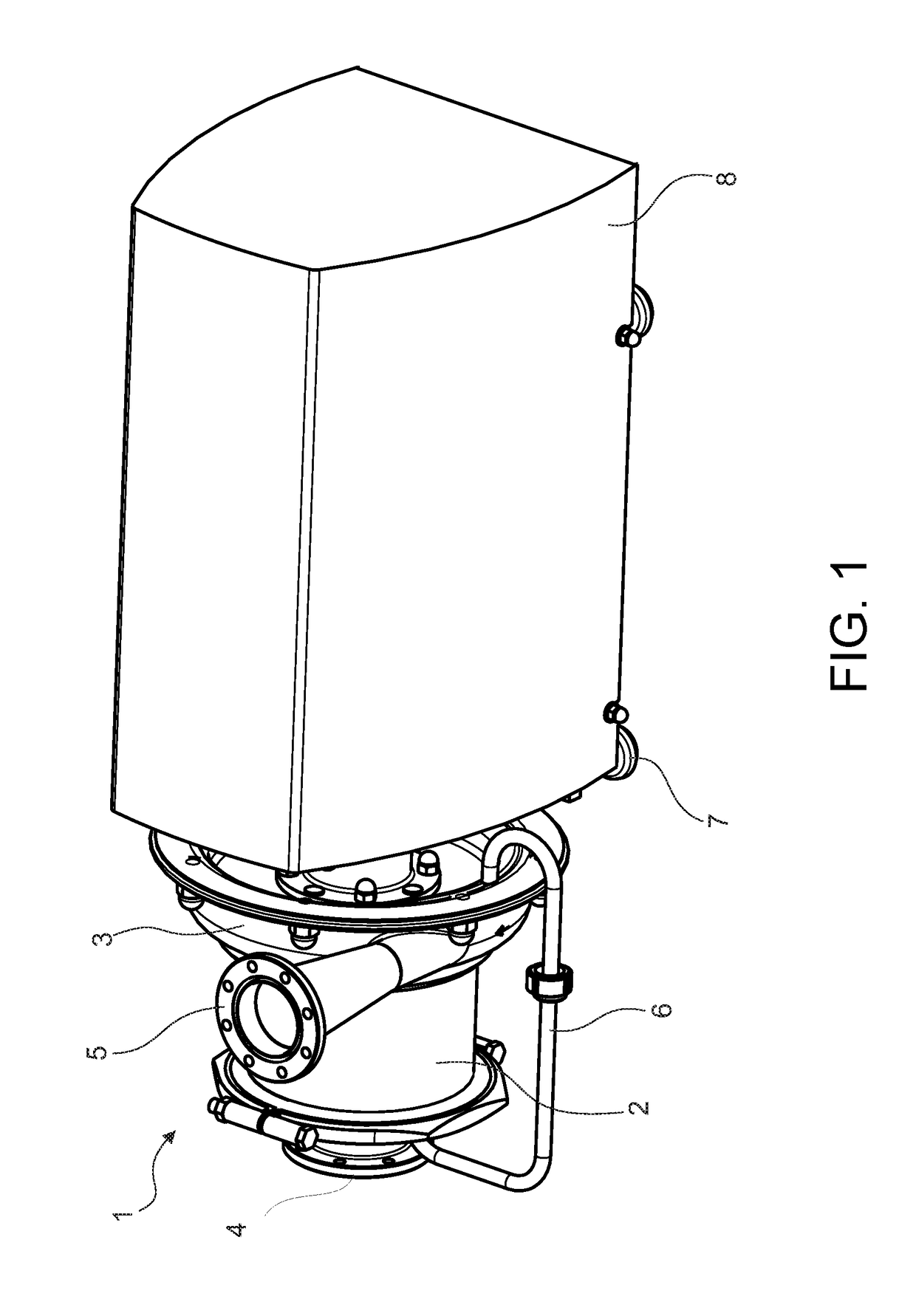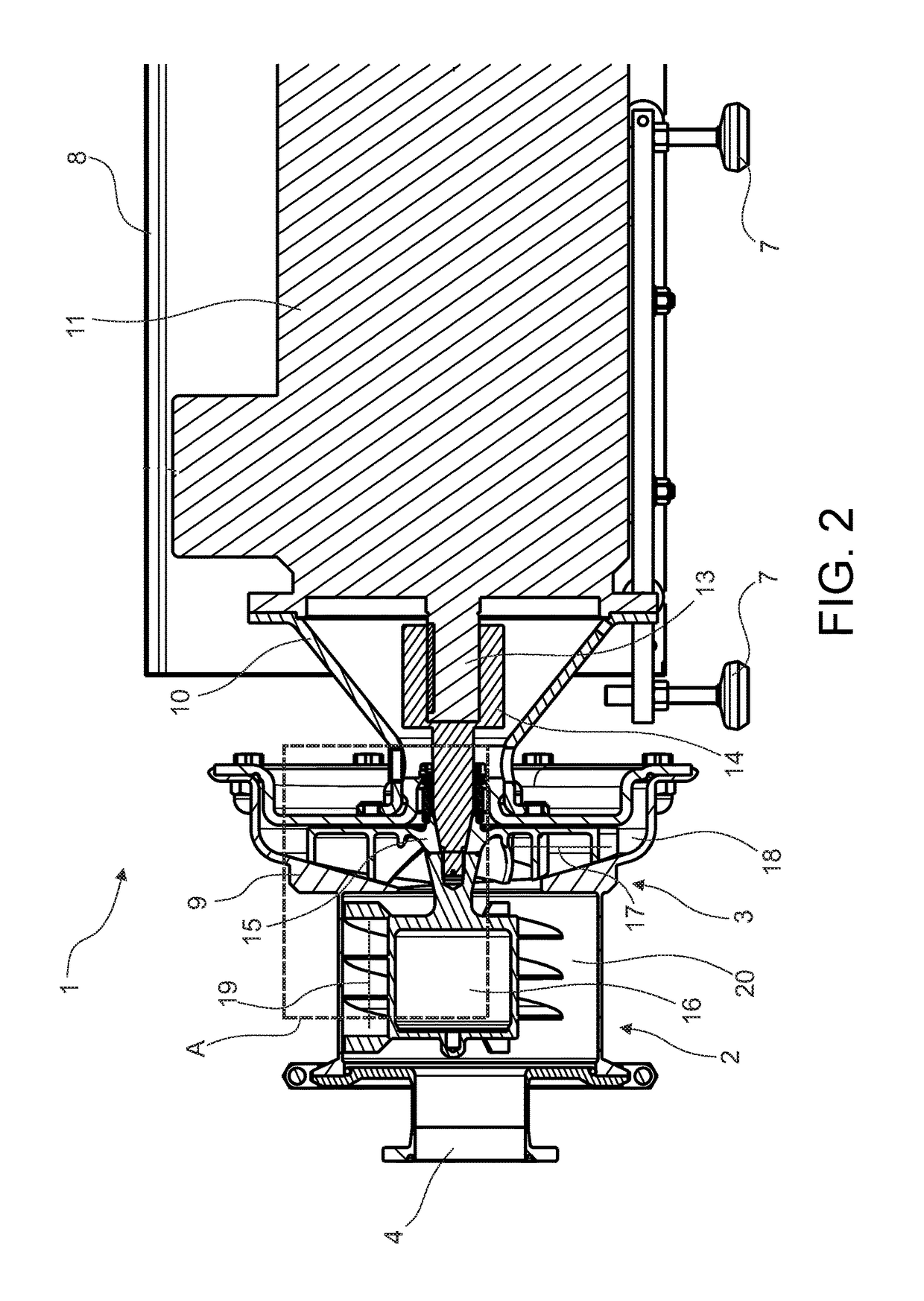Self-Priming Pump
a self-priming pump and pump body technology, applied in the direction of priming pumps, machines/engines, liquid fuel engines, etc., can solve the problems of unappealing shaft constriction concept, and achieve the effect of simple design, easy production, and enhanced modular system advantages
- Summary
- Abstract
- Description
- Claims
- Application Information
AI Technical Summary
Benefits of technology
Problems solved by technology
Method used
Image
Examples
Embodiment Construction
[0029]FIG. 1 shows a self-priming rotary pump 1 in a perspective representation. This rotary pump 1 comprises a liquid ring pump stage 2 and a normally priming centrifugal pump 3. The liquid ring pump stage 2 is assigned an inlet 4 of the self-priming rotary pump 1. Fluid, especially liquid to which gas may be added, enters through the inlet 4 of the rotary pump 1 and initially passes into the liquid ring pump stage 2. Then the fluid is transferred to the centrifugal pump 3. The fluid ejected from there leaves the self-priming rotary pump 1 through the outlet 5. A return line 6 branches from the centrifugal pump 3. The fluid flows through this return line 6 from the rotary pump 1 back into the liquid ring pump stage 2 and is available there to form the liquid ring even when the rotary pump 1 is starting.
[0030]The self-priming rotary pump 1 rests on feet 7 and possesses a cover 8 under which drive and control means are located, wherein the pumping effect of the self-priming rotary pu...
PUM
 Login to View More
Login to View More Abstract
Description
Claims
Application Information
 Login to View More
Login to View More - R&D
- Intellectual Property
- Life Sciences
- Materials
- Tech Scout
- Unparalleled Data Quality
- Higher Quality Content
- 60% Fewer Hallucinations
Browse by: Latest US Patents, China's latest patents, Technical Efficacy Thesaurus, Application Domain, Technology Topic, Popular Technical Reports.
© 2025 PatSnap. All rights reserved.Legal|Privacy policy|Modern Slavery Act Transparency Statement|Sitemap|About US| Contact US: help@patsnap.com



